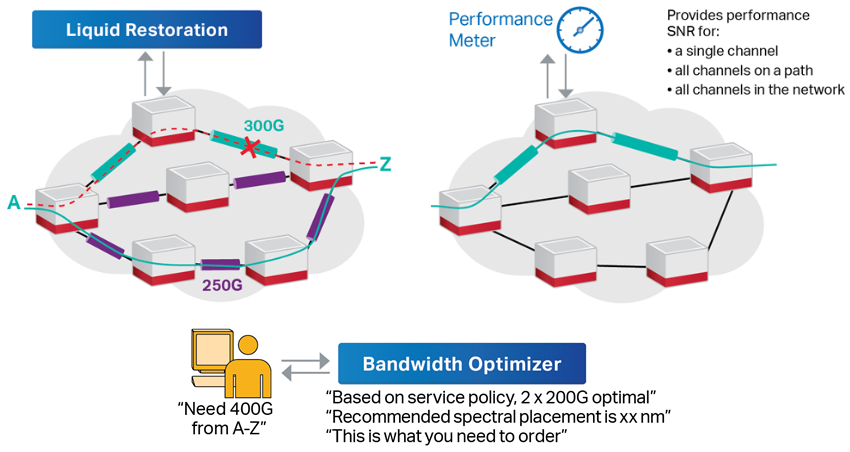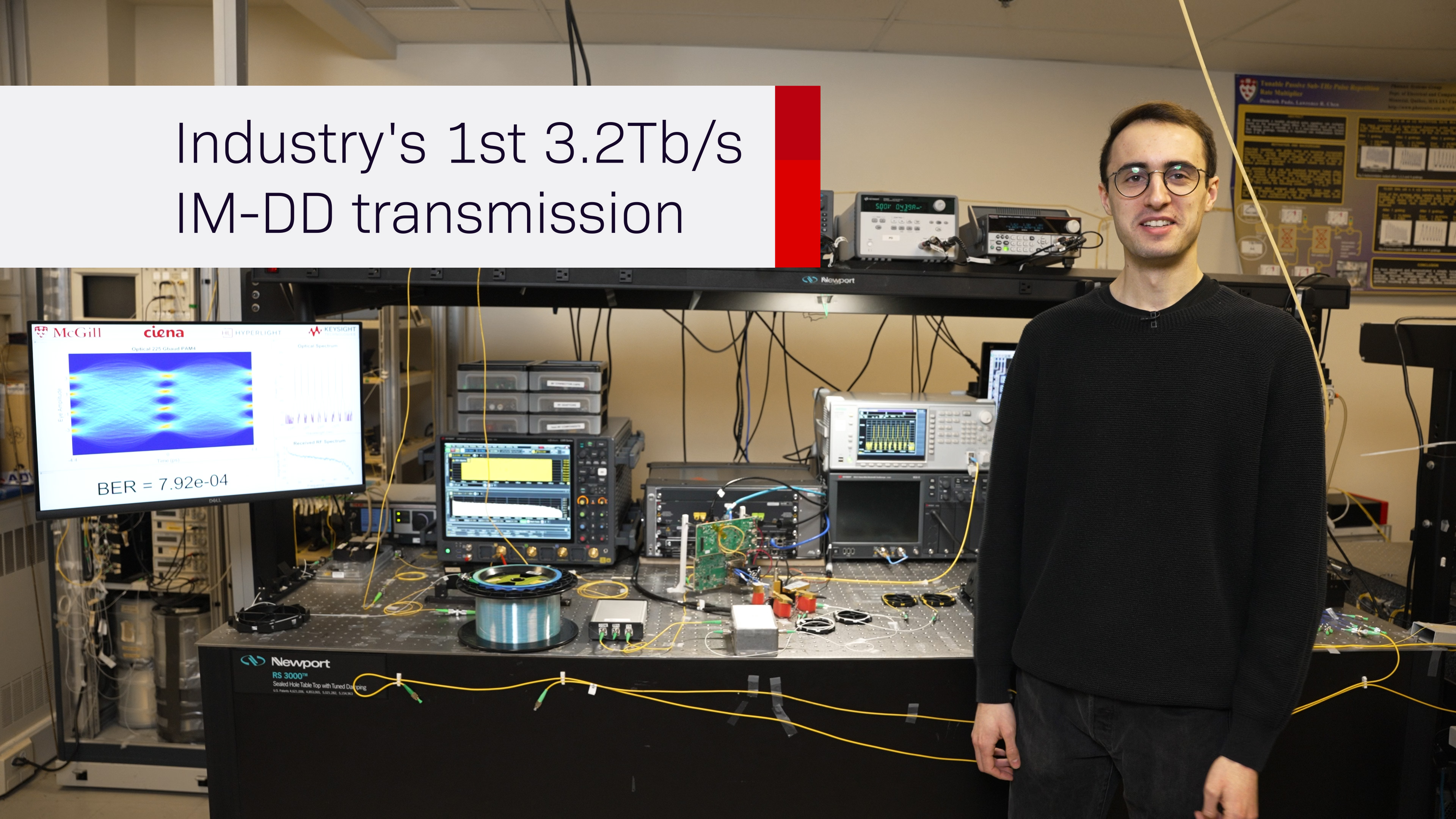Ciena unveils Liquid Spectrum: The future of software-defined optical networks
For all the “agile” innovation that has been achieved in optical networks over the last decade around massive capacity increases with tunable coherent optics, flexible reconfigurable ROADMs and multi-layer control plane, you could argue that optical networks are still built in much the same way they’ve always been.
Today’s optical networks are still predominantly rigid and static. They are engineered from the get-go to accommodate the network planner’s best-guess predictions of worst-case scenarios: worst case A-Z capacity demands, worst-case SLAs, worst case system fill conditions – you get the idea.
Of course, this creates significant inefficiencies and capital waste in optical networks due to the likelihood of underutilized equipment and rarely used capacity. But underestimate demand and you risk not being able to accommodate traffic spikes and have to deal with lengthy and complex unplanned deployments.
To date, operators have been restrained to this mode of operation because they lack real-time data from the network, the right analytics and SW tools, the visibility they need to do things differently. They need to implement a “set and forget” type of approach because it is just too manually intensive and complex to make changes to deployed wavelengths throughout the life of the network.
At its core, Liquid Spectrum is about mining and using available system margin – a changing variable over the life of the network – to gain optical capacity on-demand, improved reach for a specific channel, or increased service availability.
Today, we enter a new world with Ciena's introduction of Liquid Spectrum, which changes the way optical networks are engineered, operated, and monetized. At its core, Liquid Spectrum is about mining and using available system margin – a changing variable over the life of the network – to gain optical capacity on-demand, improved reach for a specific channel, or increased service availability.
Liquid Spectrum combines highly instrumented, programmable hardware with advanced software applications to help operators extract the most value from their network, massively scale at lowest cost per bit, and fully monetize their network resources – all while using APIs and standard interfaces to support customers’ requirements for an accessible, open architecture.

Liquid Spectrum: A completed puzzle years in the making
Even though we are unveiling Liquid Spectrum today, this concept of a programmable and software-defined optical network is one we’ve been building towards for several years. In fact, many of the major product and technology innovations we’ve unveiled over the last few years have been puzzle pieces in the broader Liquid Spectrum solution.
These various puzzle pieces can be grouped into two general categories: programmable hardware and advanced software. The software abstracts complexity associated with advanced flexible technologies and optical link engineering so that operators can now operationalize next generation technologies and use their networks in a much more dynamic fashion.
On the programmable hardware side, Liquid Spectrum includes:
- Our WaveLogic Ai coherent optics to enable tunable capacity
- Our WaveLogic Photonics system, enabling a reconfigurable, flexible grid photonic layer that supports any combination of colorless, directionless, and contentionless flexibility
- Efficient matching of client services to line capacity via the flexible platform architectures found in our 6500 and Waveserver platforms
On the software side, Liquid Spectrum includes:
- Blue Planet MCP to unify service and network management, control and planning through a single interface
- New Liquid Spectrum software applications that allow operators to get more value from their network. With the initial rollout of applications, value can be real-time visibility into network performance that allows for proactive system optimization (Performance Meter), a much simpler and faster way to turn up wavelengths (Bandwidth Optimizer), increased service availability (Liquid Restoration) or automation of service provisioning in multi-vendor networks (Wave-Line Synchronizer).
- Open APIs and modern data models to allow for better real-time network telemetry and measurement.

Consistency in an ever-changing environment
All these puzzle pieces combine to dramatically simplify how optical networks are designed, built, and operated, enabling systems that are both scalable to meet today’s significant bandwidth demands, as well as open and programmable to deliver the exact service performance required at any point in time.
And it is these capabilities that are now a requirement in today’s constantly evolving, on-demand world. It is not possible to predict the network impact of applications that have yet to be invented, traffic patterns arising from either augmented and virtual reality applications or the billions of devices that have yet to be connected, nor the full implications of the evolution to 5G. What is certain in today’s networks is that bandwidth demand at any location is dynamic and fluid, and will change as new end-user devices and applications enter the market.
It is a new world, with new rules. Liquid Spectrum is optical reimagined for an on-demand world.






